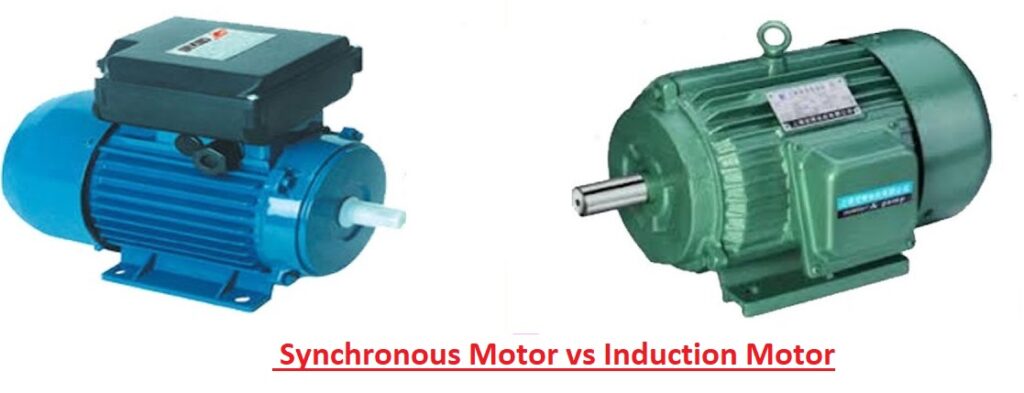Hello, readers welcome to the new post. In this post, we will discuss Difference between Synchronous and Induction Motor. A motor is a device employed to convert electrical power to mechanical. There are different types of motors according to construction work and application.
Here we cover details about the synchronous motor and induction motor and make comparisons among them. So let’s get started.
Difference between Synchronous Motor and Induction Motor
| Synchronous Motor | Induction Motor |
| When input supply is provided to the stator of the motor its moves at the synchronous speed. Synchronous speed is the rotation speed of the field provided at the stator. | The speed of rotation of an induction motor is less than the synchronous speed. |
| Its rotor is connected with a separate direct current source that provides a field the rotor for the self-starting process. | The induction motor is self-starting there is no need of any separate direct current source. |
| During the initial process of the motor, there should be a rotation speed of the rotor equal to synchronous speed. If it happens then the rotor is linked magnetically with the poles created at the rotor by the field, so the rotor continues its operation at synchronous speed. | There is no need of any separate circuit for starting of motor. |
| The main difference between an induction motor and a synchronous motor is that a synchronous motor needs an exterior dc supply. | It lacks a dc source. |
| Slip rings and carbon brushes are connected to the synchronous motor. | There is no need of slip ring and carbon brushes that make its construction simple. |
| This motor needs special circuit for a rotor to rotate at synchronous speed. | No special Circuitry is required. |
| The value of the power factor of a synchronous motor can be lagging, unity or leading | Due to inductive load, it always operates at a lagging power factor |
| The efficiency of these motors is higher than induction motors. | Its efficiency is less than a synchronous motor. |
| Its price is also higher. | It is less costly. |
Synchronous Motor Applications
- These are some applications of synchronous motors that are mentioned here.
- The main purpose of installation in different power systems is to maintain the power factor.
- These motors also employed in voltage-regulating applications.
- It is used in such systems where less speed and higher loads are working.
- Compressors mostly consist of synchronous motors.
- Cranks, grinders or where high power load is working where these motors are used.
That is all about the Difference between Synchronous motors and Induction Motor have discussed all the paraments. So if you have any further queries ask in the comments. Thanks for reading have a good day. Thanks for reading see you next post.







